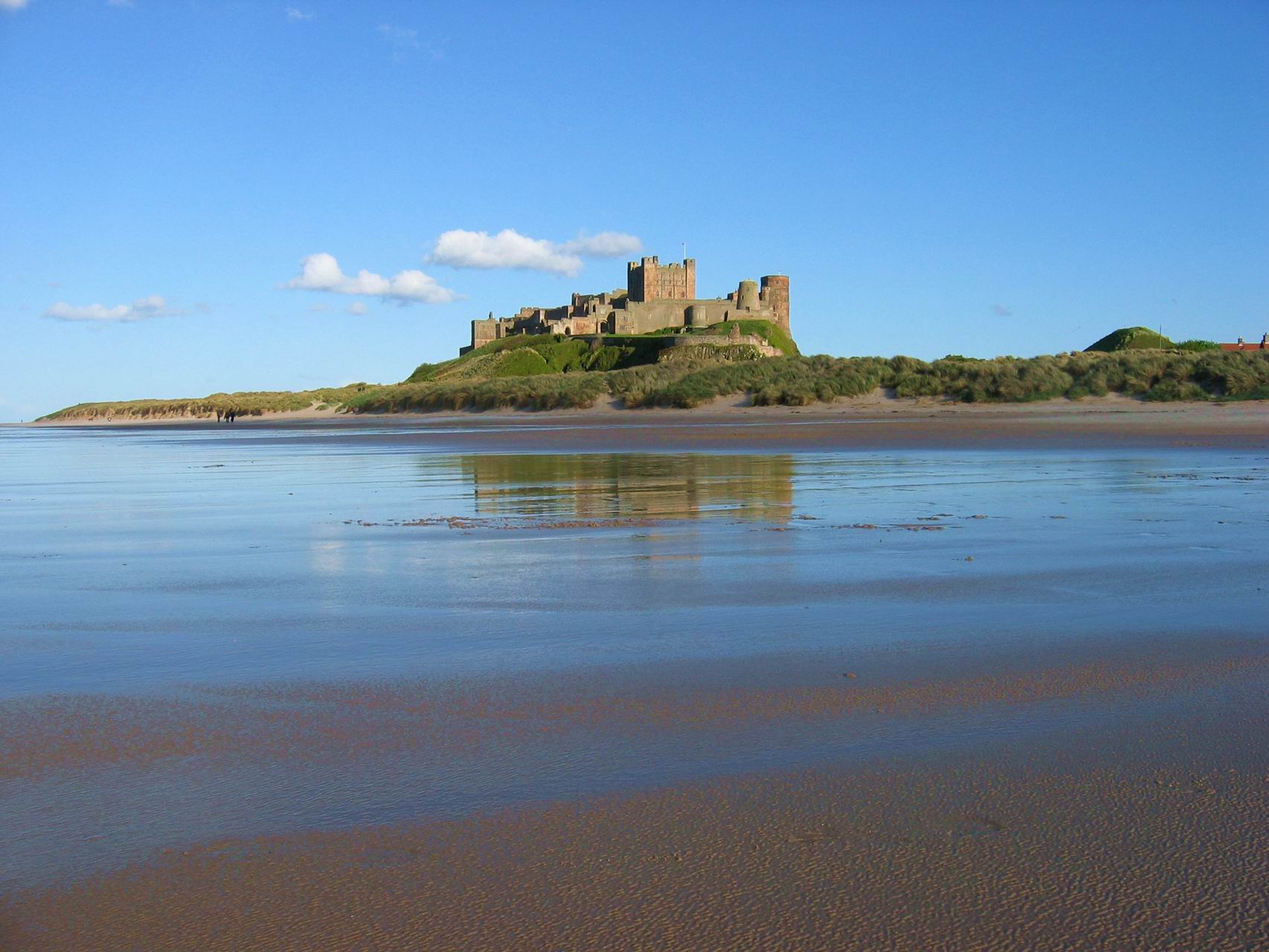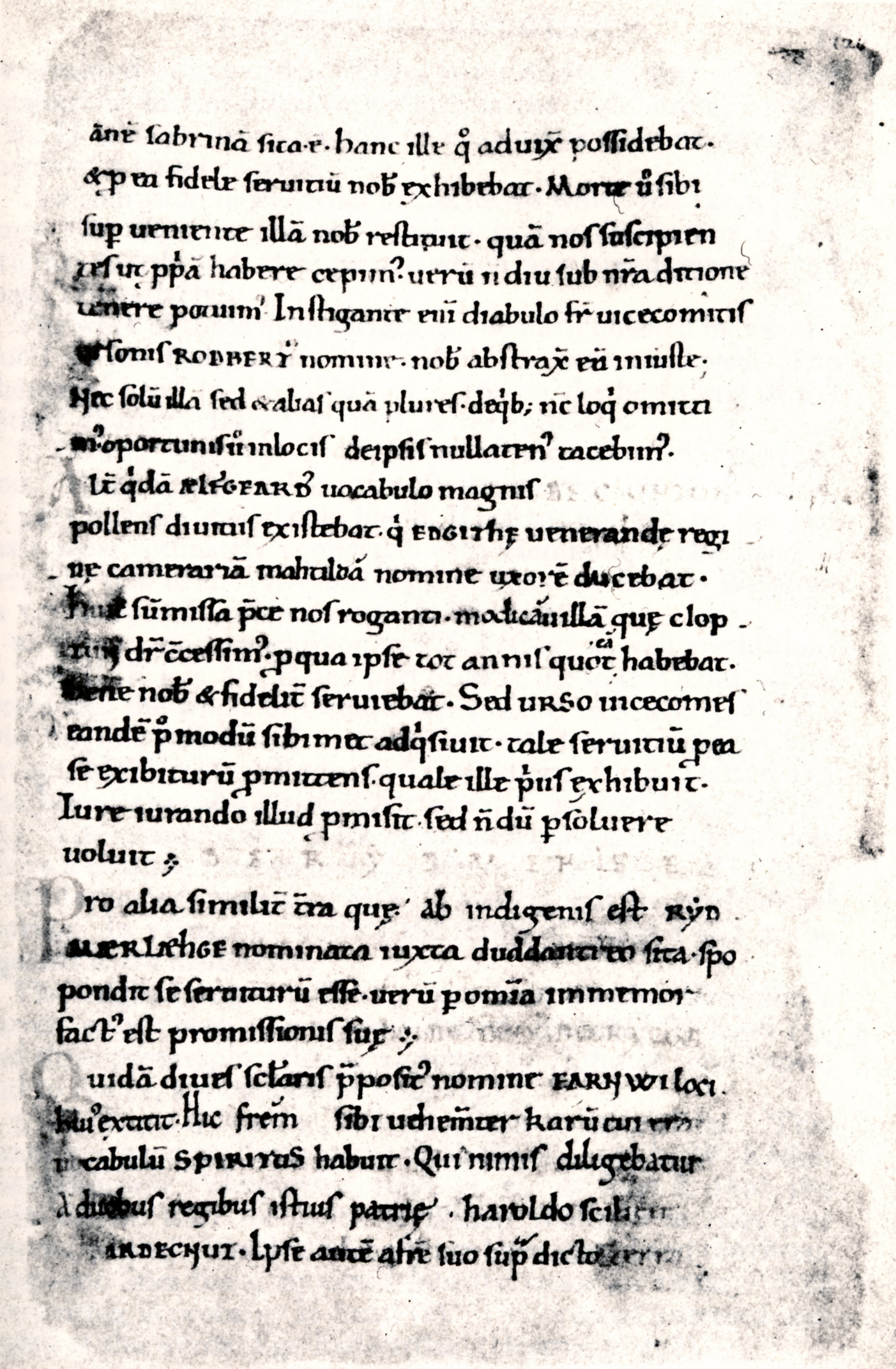|
Ealdorman
Ealdorman (, ) was a term in Anglo-Saxon England which originally applied to a man of high status, including some of royal birth, whose authority was independent of the king. It evolved in meaning and in the eighth century was sometimes applied to the former kings of territories which had submitted to great powers such as Mercia. In Wessex in the second half of the ninth century it meant the leaders of individual shires appointed by the king. By the tenth century ealdormen had become the local representatives of the West Saxon king of England. Ealdormen would lead in battle, preside over courts and levy taxation. Ealdormanries were the most prestigious royal appointments, the possession of noble families and semi-independent rulers. Their territories became large, often covering former kingdoms such as Mercia or East Anglia. Southern ealdormen often attended court, reflecting increasing centralisation of the kingdom, but the loyalty of northern ealdormen was more uncertain. In ... [...More Info...] [...Related Items...] OR: [Wikipedia] [Google] [Baidu] |
Ælfhere, Ealdorman Of Mercia
Ælfhere (died in 983) was Ealdorman of Mercia. His family, along with those of Æthelstan Half-King and Æthelstan Rota, rose to greatness in the middle third of the 10th century. In the reign of Edward the Martyr, Ælfhere was a leader of the anti-monastic reaction and an ally of Edward's stepmother Queen Dowager Ælfthryth. After the killing of Edward by Ælfthryth's servants in 978, Ælfhere supported the new king, Ælfthryth's son Æthelred the Unready, and was the leading nobleman in the Kingdom of England until his death in 983. Origins and relations Ælfhere was a son of Ealhhelm (fl. 940–951) who had been one of the several ealdormen in Mercia in the reigns of Kings Edmund and Eadred. The family was of Wessex origin, like most of those prominent in Mercia in the period, and may have been connected to the royal family, probably members of a collateral branch of the Royal house. The family's power-base was probably in south-west Mercia, in the diocese of Worcester, ... [...More Info...] [...Related Items...] OR: [Wikipedia] [Google] [Baidu] |
Anglo-Saxon Chronicle - Ealdormen (British Library Cotton MS Tiberius A VI, Folio 4r)
The Anglo-Saxons were a Cultural identity, cultural group who inhabited England in the Early Middle Ages. They traced their origins to settlers who came to Britain from mainland Europe in the 5th century. However, the ethnogenesis of the Anglo-Saxons happened within Britain, and the identity was not merely imported. Anglo-Saxon identity arose from interaction between incoming groups from several Germanic peoples, Germanic tribes, both amongst themselves, and with Celtic Britons, indigenous Britons. Many of the natives, over time, adopted Anglo-Saxon culture and language and were assimilated. The Anglo-Saxons established the concept, and the Kingdom of England, Kingdom, of England, and though the modern English language owes somewhat less than 26% of its words to their language, this includes the vast majority of words used in everyday speech. Historically, the Anglo-Saxon period denotes the period in Britain between about 450 and 1066, after Anglo-Saxon settlement of Britain, th ... [...More Info...] [...Related Items...] OR: [Wikipedia] [Google] [Baidu] |
Earls, Ealdormen And High-reeves Of Bamburgh
The Rulers of Bamburgh were significant regional potentates in what is now northern England and south-eastern Scotland during the Viking Age. Sometimes referred to in modern sources as the Earldom of Bamburgh, their polity existed for roughly two centuries, beginning after the attacks on the Anglo-Saxon Kingdom of Northumbria by the Vikings in the later ninth century, and ending after the Norman Conquest later in the eleventh century. In Scottish and Irish sources of the period the Bamburgh 'earldom' is referred to as the kingship of the Northern English (or the North English kingdom). or simply of the 'Saxons'. In essence, Bamburgh and the surrounding region (the former Bernicia), the northern part of Northumbria, was ruled for a short period by shadowy kings, then by a series of 'kings', 'earls' (Latin '' duces'') and 'high-reeves' (from Old English ''heah-gerefa''). Most of these were descended from Eadwulf I of Bamburgh, thereafter called the Eadwulfings or House of Bamburgh. ... [...More Info...] [...Related Items...] OR: [Wikipedia] [Google] [Baidu] |
Wulfstan, Ealdorman Of Wiltshire
Weohstan (died 802) was the ealdorman of Wiltshire, part of the kingdom of Wessex, at the beginning of the ninth century. In 802 King Beorhtric died, and on the same day ealdorman Æthelmund of the Hwicce Hwicce () was a tribal kingdom in Anglo-Saxon England. According to the ''Anglo-Saxon Chronicle'', the kingdom was established in 577, after the Battle of Deorham. After 628, the kingdom became a client or sub-kingdom of Mercia as a result of t ... invaded Wiltshire. He was met by a Wiltshire army under Weohstan, which defeated the invasion and both ealdormen were killed in the battle. According to a poem in the fifteenth century ''Chronicon Vilodunense'', Weohstan founded Wilton Abbey, and his wife Alburga, the sister of Beorhtric's successor, King Ecgberht, later became the abbess. This story is accepted by some historians, but rejected by Sarah Foot and Elizabeth Crittall. References {{DEFAULTSORT:Wulfstan, Ealdorman of Wiltshire 8th-century English people 8th- ... [...More Info...] [...Related Items...] OR: [Wikipedia] [Google] [Baidu] |
Mercia
la, Merciorum regnum , conventional_long_name=Kingdom of Mercia , common_name=Mercia , status=Kingdom , status_text=Independent kingdom (527–879)Client state of Wessex () , life_span=527–918 , era= Heptarchy , event_start= , date_start= , year_start=527 , event_end= , date_end= , year_end=918 , event1= , date_event1= , event2= , date_event2= , event3= , date_event3= , event4= , date_event4= , p1=Sub-Roman Britain , flag_p1=Vexilloid of the Roman Empire.svg , border_p1=no , p2=Hwicce , flag_p2= , p3=Kingdom of Lindsey , flag_p3= , p4=Kingdom of Northumbria , flag_p4= , s1=Kingdom of England , flag_s1=Flag of Wessex.svg , border_s1=no , s2= , flag_s2= , image_flag= , image_map=Mercian Supremacy x 4 alt.png , image_map_caption=The Kingdom of Mercia (thick line) and the kingdom's extent during the Mercian Supremacy (green shading) , national_motto= , national_anthem= , common_languages=Old English * Mercian dialect British Latin , currency=Sceat History of the English penny (c. ... [...More Info...] [...Related Items...] OR: [Wikipedia] [Google] [Baidu] |
Odda, Ealdorman Of Devon
Odda, also known as Oddune,Harding p. 6 was a ninth-century ealdorman of Devon. He is known for his victory at the Battle of Cynwit in 878, where his West Saxon forces defeated a Viking army led by Ubba, brother of the Viking chiefs Ivar the Boneless and Halfdan Ragnarsson. Biography Little is known of Odda's early life, but he became ealdorman of Devon sometime before 878, ultimately succeeding ''Karl'', or ''Ceorle'', the ealdorman in 851.Fisher p. 539 Throughout the 870s Odda's liege, Alfred the Great, King of Wessex, was engaged in constant war with the Vikings. They had begun their invasion of England in 865, and by Alfred's accession in 871 the Kingdom of Wessex was the only Anglo-Saxon realm opposing them.Savage p. 101 By 878 the conflict was going poorly for Alfred. In January of that year, the Danes made a sudden attack on Chippenham, a royal stronghold in which Alfred had been staying over Christmas, "and most of the people they killed, except ... King Alfred, and he ... [...More Info...] [...Related Items...] OR: [Wikipedia] [Google] [Baidu] |
Eadric Streona
Eadric Streona (died 1017) was Ealdorman of Mercia from 1007 until he was killed by King Cnut. Eadric was given the epithet "Streona" (translated as "The Acquisitive”) in Hemming's Cartulary because he appropriated church land and funds for himself. Eadric became infamous in the Middle Ages because of his traitorous actions during the Danish re-conquest of England. Eadric was one of at least eight children and had relatively humble beginnings: his father Ethelric attended the court of King Æthelred the Unready, but was of no great significance and is not known to have had any titles. Even before becoming an ealdorman, Eadric seems to have acted as Æthelred's enforcer; in 1006 he instigated the killing of the Ealdorman of York, Elfhelm. Eadric was married to Æthelred's daughter Eadgyth by 1009, thus becoming his son-in-law. Eadric was appointed Ealdorman of Mercia in 1007. As an ealdorman, Eadric played an important role in the affairs of the kingdom. In 1009 he negotiate ... [...More Info...] [...Related Items...] OR: [Wikipedia] [Google] [Baidu] |
Wessex
la, Regnum Occidentalium Saxonum , conventional_long_name = Kingdom of the West Saxons , common_name = Wessex , image_map = Southern British Isles 9th century.svg , map_caption = Southern Britain in the ninth century , event_start = Established , year_start = 519 , event_end = English unification , year_end = 12 July 927 , event1 = , date_event1 = , event_pre = Settlement , date_pre = 5th–6th century , event_post = Norman conquest , date_post = 14 October 1066 , border_s2 = no , common_languages = Old English * West Saxon dialect British Latin , religion = PaganismChristianity , leader1 = Cerdic (first) , leader2 = Ine , leader3 = Ecgberht , leader4 = Alfred the Great , leader ... [...More Info...] [...Related Items...] OR: [Wikipedia] [Google] [Baidu] |
Æthelweard The Chronicler
Æthelweard, also spelled Ethelweard, Aethelweard, Athelweard, etc., is an Anglo-Saxon male name. It may refer to: * King Æthelweard of the Hwicce (''fl''. 7/8th century) * King Æthelweard of East Anglia (''fl.'' mid-9th century) * Æthelweard (son of Alfred) (''fl''. 9/10th century), younger son of King Alfred and Ealhswith * Æthelweard (bishop of Sherborne) (d. ''c''. 909) * Æthelweard of London (d. ''c''. 915), bishop of London * Æthelweard (historian) Æthelweard (also Ethelward; d. ), was an ealdorman and the author of a Latin version of the ''Anglo-Saxon Chronicle'' known as the '' Chronicon Æthelweardi''. He was a kinsman of the royal family, being a descendant of the Anglo-Saxon King � ... (''fl''. late 10th century), also known as Fabius Æthelweard, ealdorman and historian {{given name Old English personal names Masculine given names ... [...More Info...] [...Related Items...] OR: [Wikipedia] [Google] [Baidu] |
Ælfric Of Hampshire
Ælfric was Ealdorman of Hampshire from to 1016. Ælfric succeeded ealdorman Æthelmær to the county of Hampshire and possibly Wiltshire in about 982. Ælfric was among the leading advisers of King Æthelred and was described by the ''Anglo-Saxon Chronicle'' as 'one of those in whom the king trusted most'; this is perhaps seen in 991 when, along with Æthelweard and Sigeric, he advised the king to pay the Danes for peace, which he did. Though one of the king's most trusted men, Ælfric in 992 defected to a Danish fleet that he was supposed to attack. Though his defecting ship was captured, he escaped. However, his family suffered for this act, as Æthelred had his son Ælfgar blinded the year after (993). Ælfric was at some point reconciled with Æthelred, since the Anglo-Saxon Chronicle has him fighting for the English in 1016, but in 1003 he supposedly pretended to be sick in order to avoid leading an army from Wiltshire and Hampshire against Sweyn Forkbeard, who was allowe ... [...More Info...] [...Related Items...] OR: [Wikipedia] [Google] [Baidu] |
Alderman
An alderman is a member of a municipal assembly or council in many jurisdictions founded upon English law. The term may be titular, denoting a high-ranking member of a borough or county council, a council member chosen by the elected members themselves rather than by popular vote, or a council member elected by voters. Etymology The title is derived from the Old English title of ''ealdorman'', literally meaning "elder man", and was used by the chief nobles presiding over shires. Similar titles exist in some Germanic countries, such as the Swedish language ', the Danish, Low German language ', and West Frisian language ', the Dutch language ', the (non-Germanic) Finnish language ' (a borrowing from the Germanic Swedes next door), and the High German ', which all mean "elder man" or "wise man". Usage by country Australia Many local government bodies used the term "alderman" in Australia. As in the way local councils have been modernised in the United Kingdom and Ireland, the term a ... [...More Info...] [...Related Items...] OR: [Wikipedia] [Google] [Baidu] |
.jpg)



